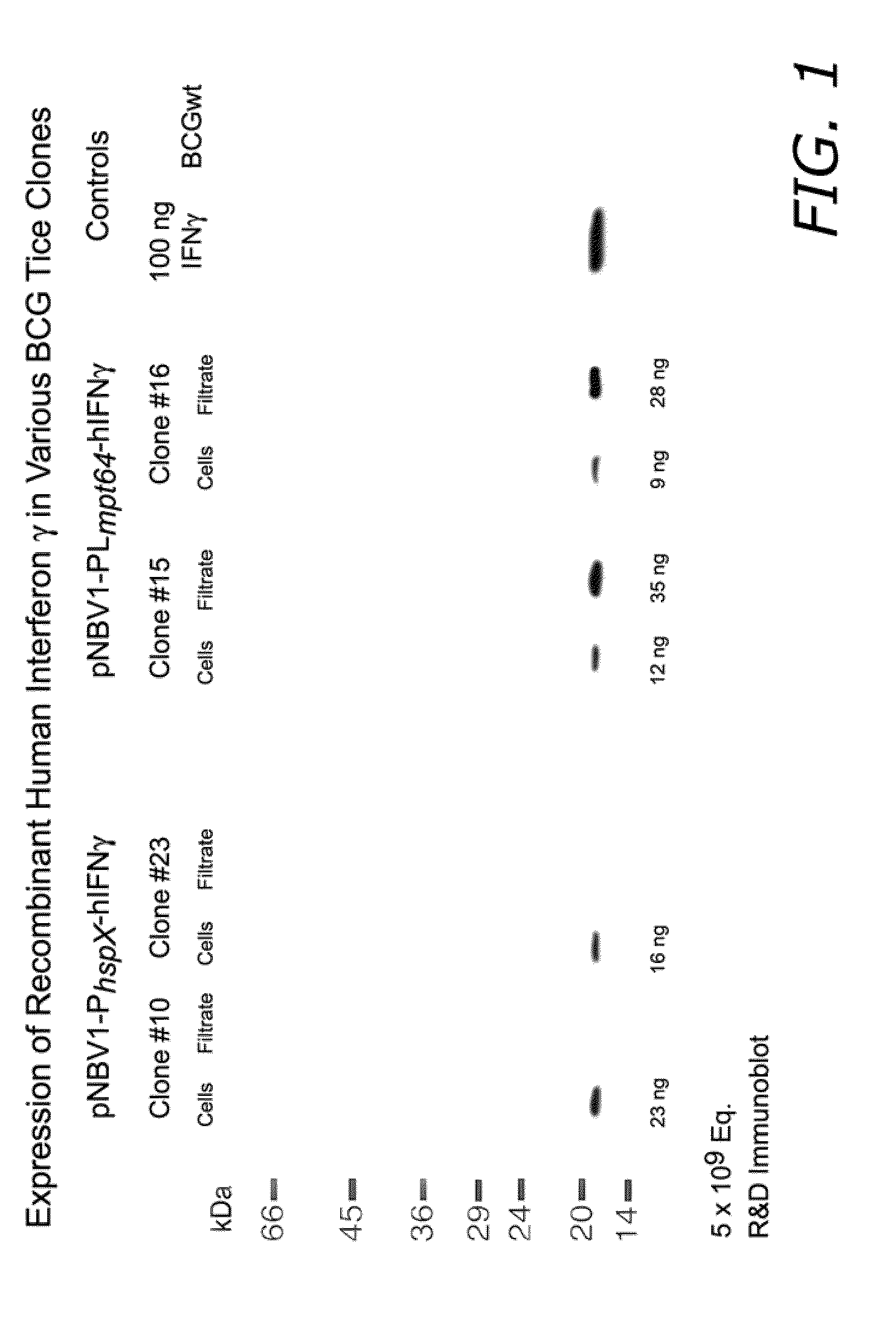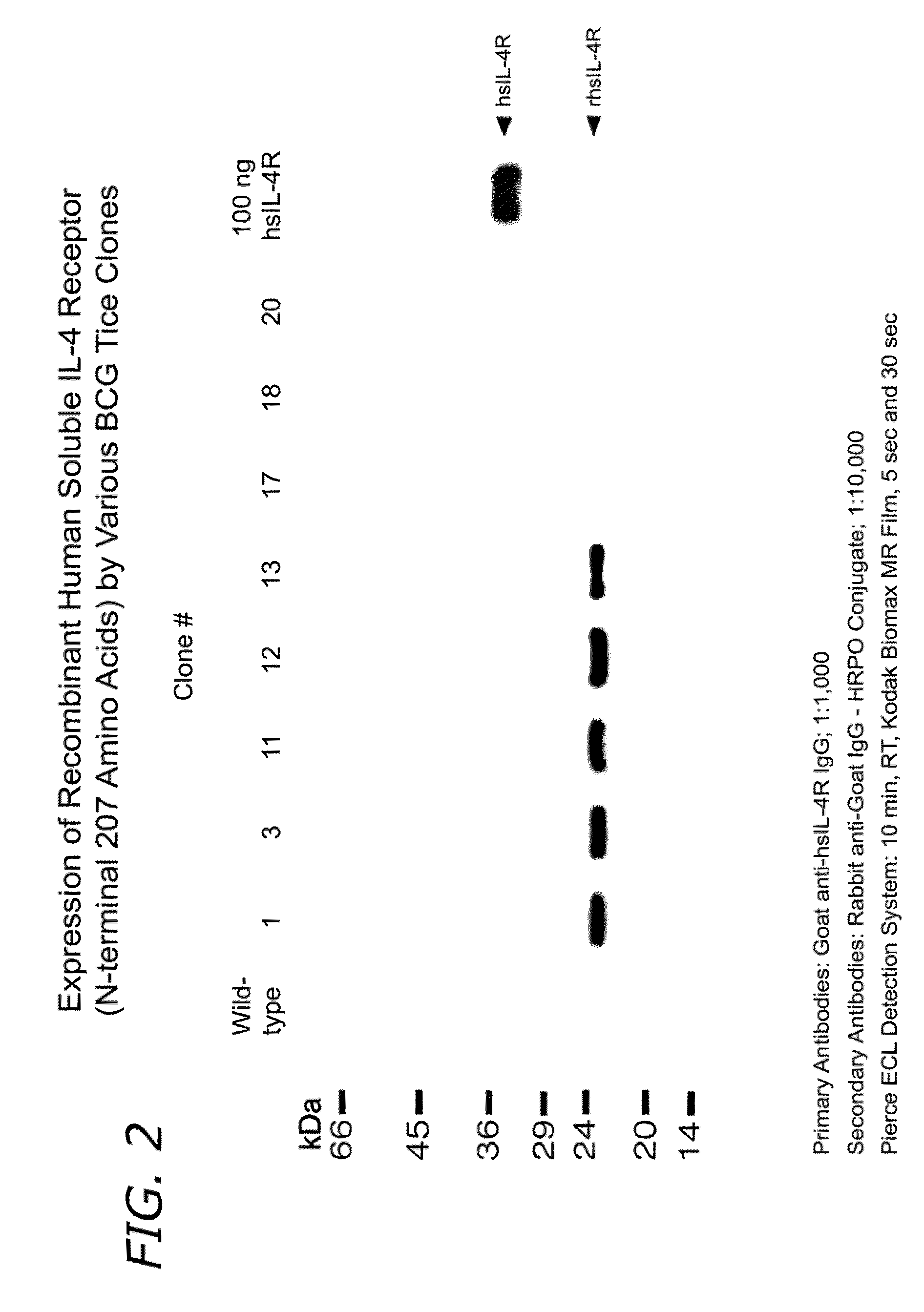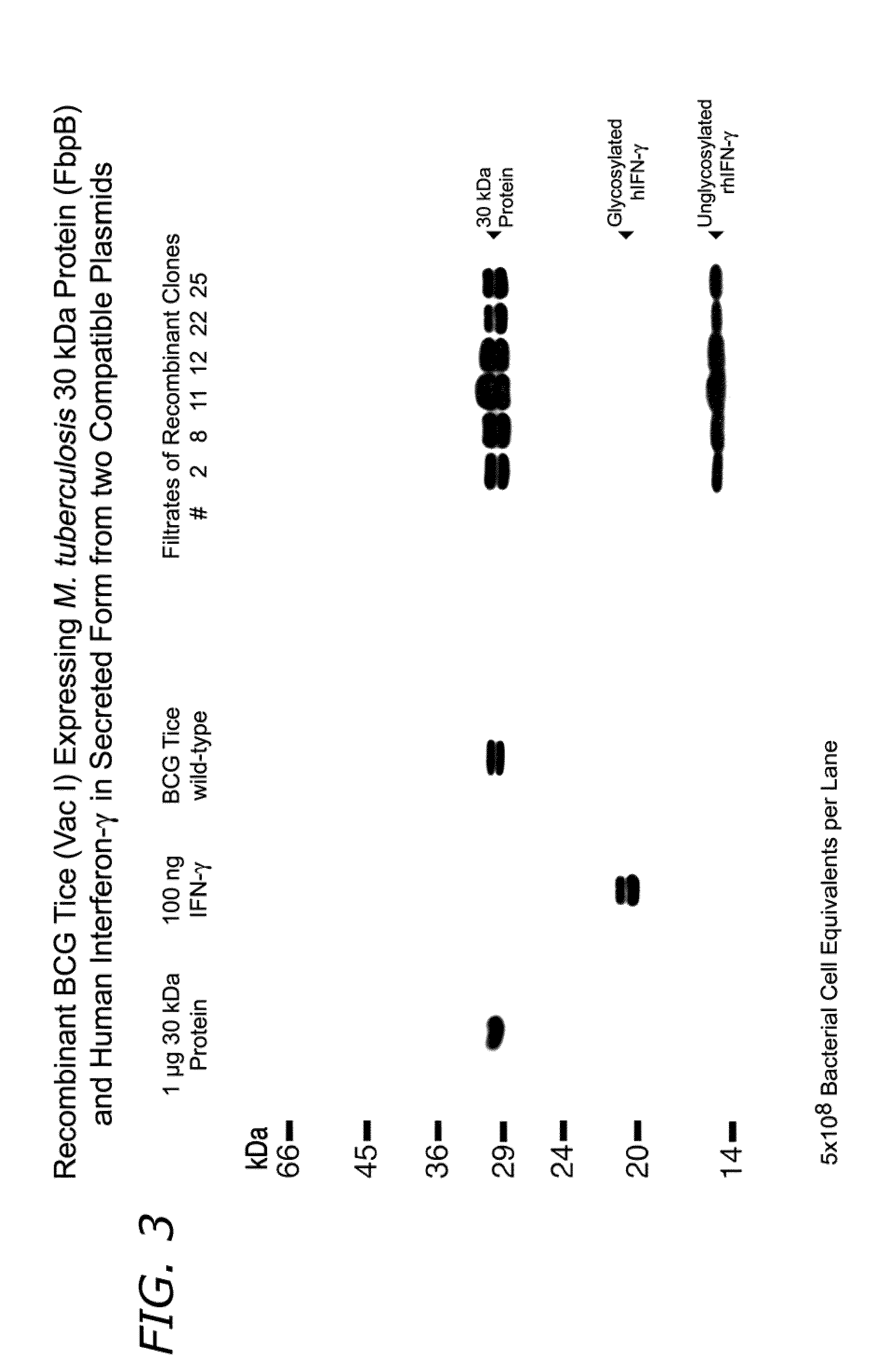Immunostimulatory Recombinant Intracellular Pathogen Immunogenic Compositions and Methods of Use
a technology of immunogenic compositions and intracellular pathogens, applied in the direction of antibacterial agents, biocides, antibacterial medical ingredients, etc., can solve the problems of limiting the universal effectiveness of therapeutic measures, causing immense suffering, and causing disease and often death
- Summary
- Abstract
- Description
- Claims
- Application Information
AI Technical Summary
Benefits of technology
Problems solved by technology
Method used
Image
Examples
example 1
Cell-Mediated, Humoral, and Protective Immunity Studies
[0145]Several studies of the efficacy of the immunogenic compositions of the present invention utilized guinea pigs because the guinea pig model is especially relevant to human tuberculosis clinically, immunologically, and pathologically. In contrast to the mouse and rat, but like the human, the guinea pig a) is susceptible to low doses of aerosolized M. tuberculosis; b) exhibits strong cutaneous delayed-type hypersensitivity (DTH) to tuberculin; and c) displays Langhans giant cells and caseation in pulmonary lesions. However, whereas only about 10% of immunocompetent humans who are infected with M. tuberculosis develop active disease over their lifetime (half early after exposure and half after a period of latency), infected guinea pigs always develop early active disease. While guinea pigs differ from humans in this respect, the consistency with which they develop active disease after infection with M. tuberculosis is an advan...
example 2
rBCGs Expressing Proteins Integrated into Genomic DNA
[0219]In another embodiment of the present invention, the genes encoding immunogenic intracellular pathogen proteins and / or cytokines can be integrated into the chromosome. For example, rBCG strains have been generated that over-express the M. tuberculosis 30 kDa protein from the chromosome through an allelic exchange procedure. A cassette containing the fbpB gene (encoding the 30 kDa protein) with expression driven from the rrs promoter was cloned into a wild-type glnA1 locus, just downstream of glnA1. This glnA1 locus with the fbpB insertion was cloned into phEX2 (a derivative of phEX1, itself a derivative of phAE87 [Bardarov et al., Microbiol. 148:3007-3017, 2002]) and specialized transducing phage was prepared by electroporating the plasmid into M. smegmatis. The phage was used to infect BCG strains and clones over-expressing the 30 kDa protein were selected.
example 3
Recombinant BCG Expressing Interferon Gamma (IFNγ)
[0220]The first approach, using a typical Sec signal peptide to secrete hIFNγ, resulted in a strain with unstable expression and secretion of biologically active hIFNγ. Therefore, recombinant BCG vaccines were generated that expressed and secreted mycobacterial codon optimized hIFNγ using twin-arginine translocation (Tat) signal peptides from plcB (MTRRQFFAKAAAATTAGAFMSLAGPIIEKAYG, SEQ ID NO:1), phoD (MAYDSRFDEWVQKLKEESFQNNTFDRRKFIQGAGKIAGLSLGLTIAQSVGAFEV, SEQ ID NO:2), and torA (MNNNDLFQASRRRFLAQLGGLTVAGMLGPSLLTPRRATA, SEQ ID NO:3). Proteins secreted by the Tat system are secreted after first folding in the cytoplasm, in contrast to the proteins secreted by the Sec system, which are not folded prior to secretion. As a control, intracellular hIFNγ (i.e. without a signal peptide) was also expressed to confirm the generation of a stable strain expressing full-length hIFNγ, uncomplicated by the difficulties inherent with secretion of a ...
PUM
| Property | Measurement | Unit |
|---|---|---|
| Atomic weight | aaaaa | aaaaa |
| Atomic weight | aaaaa | aaaaa |
| Atomic weight | aaaaa | aaaaa |
Abstract
Description
Claims
Application Information
 Login to View More
Login to View More - R&D
- Intellectual Property
- Life Sciences
- Materials
- Tech Scout
- Unparalleled Data Quality
- Higher Quality Content
- 60% Fewer Hallucinations
Browse by: Latest US Patents, China's latest patents, Technical Efficacy Thesaurus, Application Domain, Technology Topic, Popular Technical Reports.
© 2025 PatSnap. All rights reserved.Legal|Privacy policy|Modern Slavery Act Transparency Statement|Sitemap|About US| Contact US: help@patsnap.com



